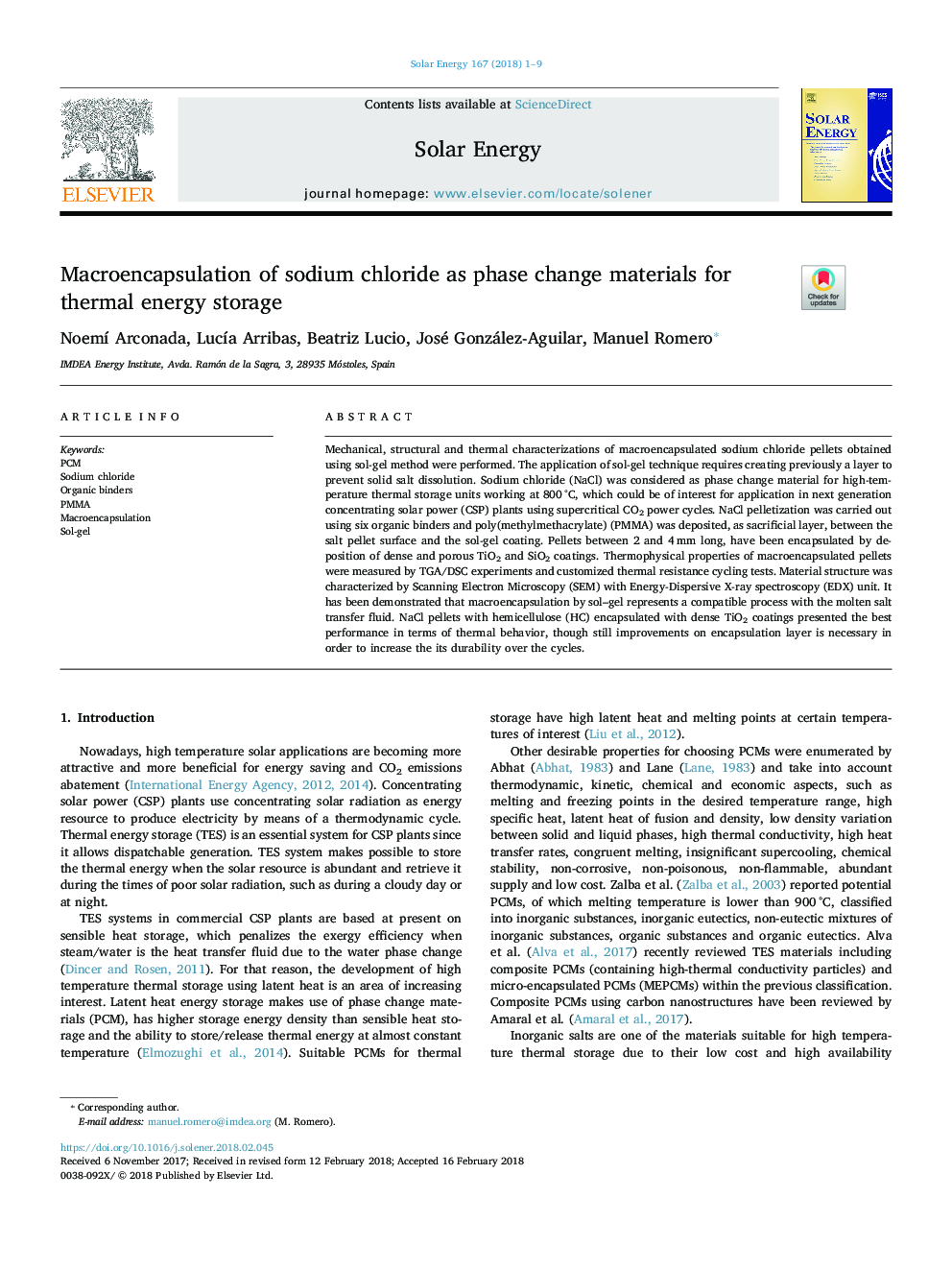| Article ID | Journal | Published Year | Pages | File Type |
|---|---|---|---|---|
| 7935216 | Solar Energy | 2018 | 9 Pages |
Abstract
Mechanical, structural and thermal characterizations of macroencapsulated sodium chloride pellets obtained using sol-gel method were performed. The application of sol-gel technique requires creating previously a layer to prevent solid salt dissolution. Sodium chloride (NaCl) was considered as phase change material for high-temperature thermal storage units working at 800â¯Â°C, which could be of interest for application in next generation concentrating solar power (CSP) plants using supercritical CO2 power cycles. NaCl pelletization was carried out using six organic binders and poly(methylmethacrylate) (PMMA) was deposited, as sacrificial layer, between the salt pellet surface and the sol-gel coating. Pellets between 2 and 4â¯mm long, have been encapsulated by deposition of dense and porous TiO2 and SiO2 coatings. Thermophysical properties of macroencapsulated pellets were measured by TGA/DSC experiments and customized thermal resistance cycling tests. Material structure was characterized by Scanning Electron Microscopy (SEM) with Energy-Dispersive X-ray spectroscopy (EDX) unit. It has been demonstrated that macroencapsulation by sol-gel represents a compatible process with the molten salt transfer fluid. NaCl pellets with hemicellulose (HC) encapsulated with dense TiO2 coatings presented the best performance in terms of thermal behavior, though still improvements on encapsulation layer is necessary in order to increase the its durability over the cycles.
Related Topics
Physical Sciences and Engineering
Energy
Renewable Energy, Sustainability and the Environment
Authors
Noemà Arconada, LucÃa Arribas, Beatriz Lucio, José González-Aguilar, Manuel Romero,
